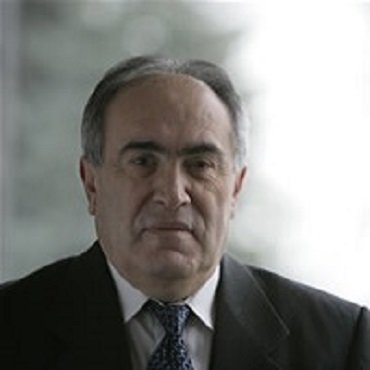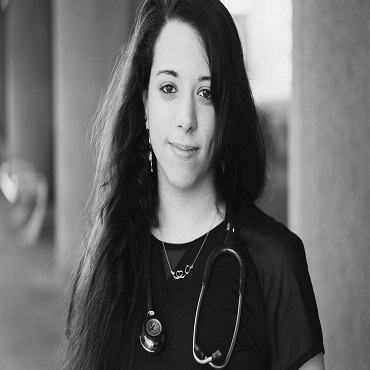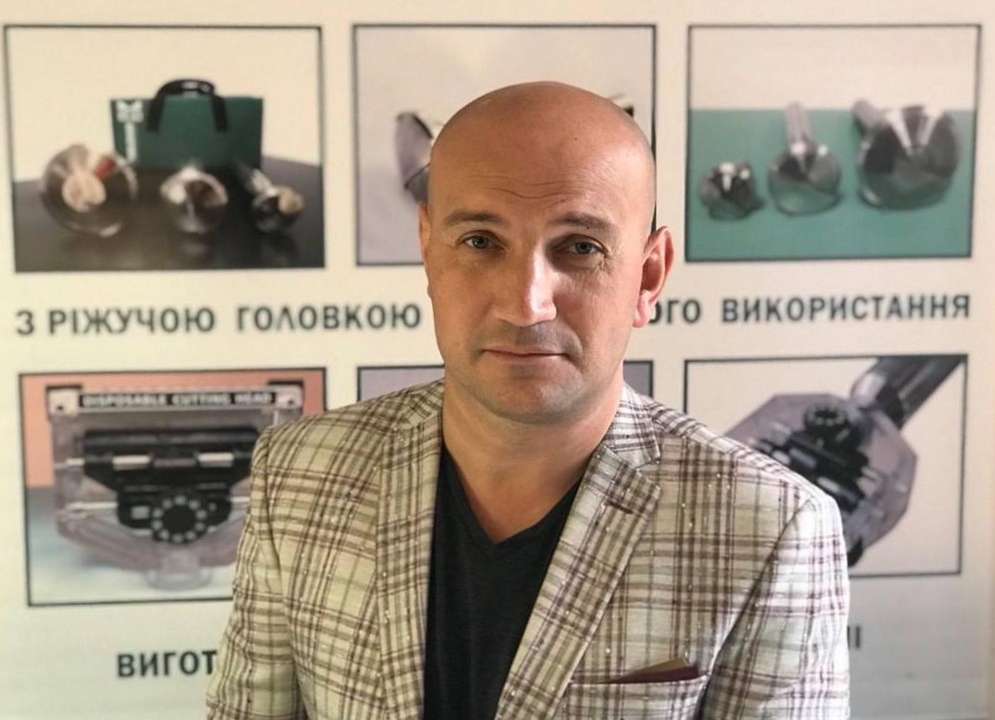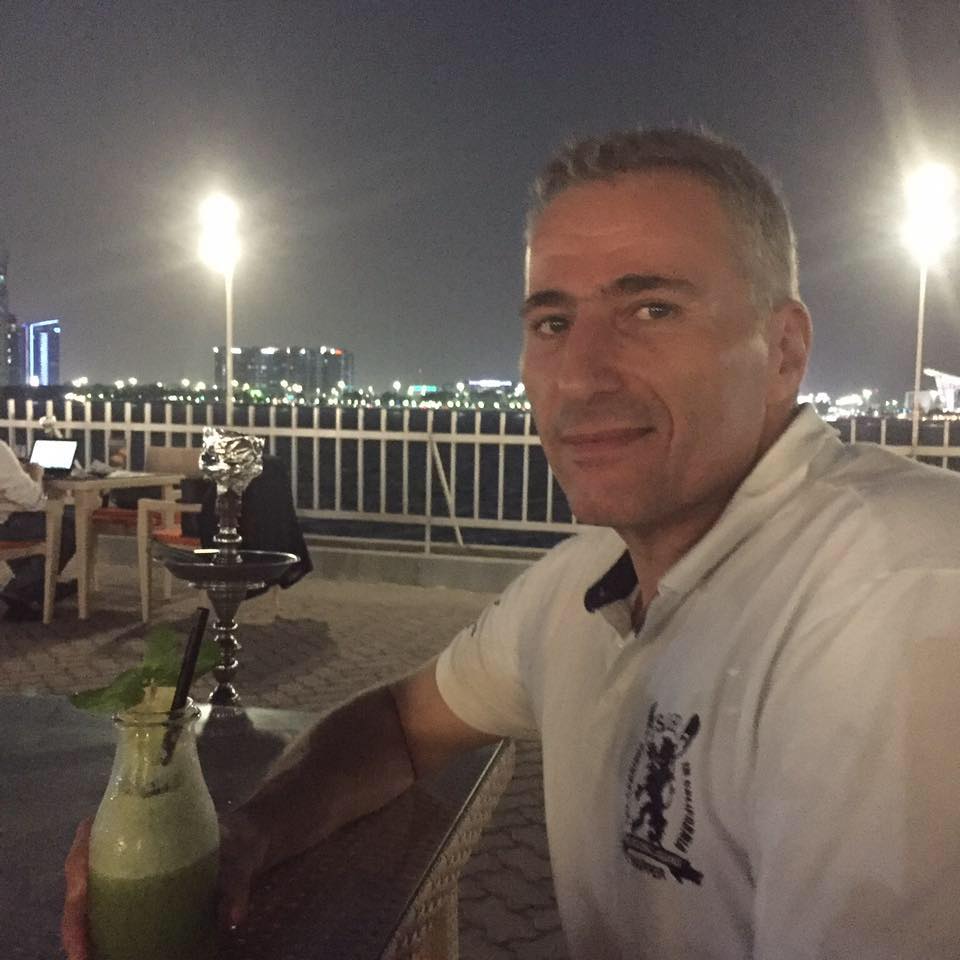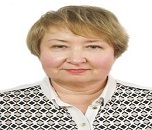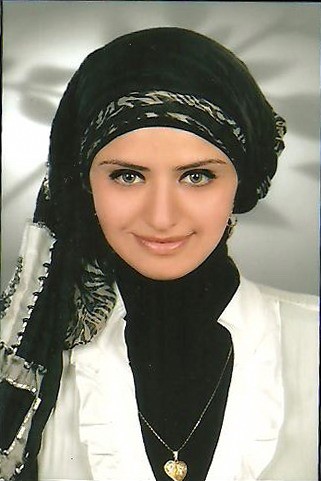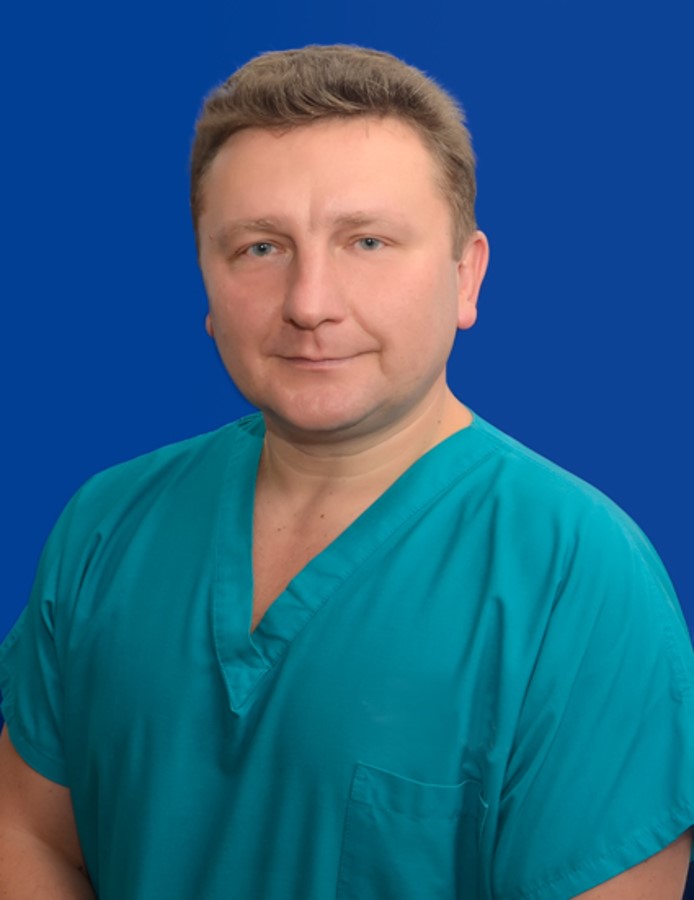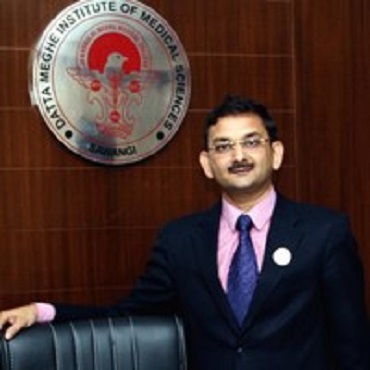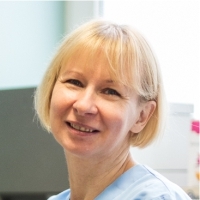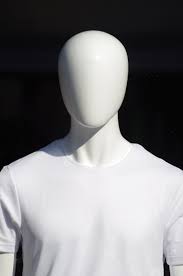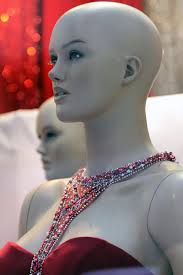Scientific Program
Keynote Session:
Title: Fundamentals of ultrasound wound care: technologies, devices, science and clinical outcomes
Biography:
Eliaz P. Babaev (sometimes spelled Eilaz) is a co-founder, president and CEO of Arobella Medical, LLC. A recognized leader in his field, all Arobella technology and innovation is grounded in Eliaz' fifty years working in non-imaging advanced ultrasound technology. Eliaz has been a consistent and prodigious inventor; with over 50 Issued and over 20 pending US patents in areas such as advanced ultrasound technology, biomedical materials and orthopedics. Before co-founding Arobella, Eliaz has held numerous positions in business and academia. He was the co-founder, CEO and later Chief Technical Officer of Celleration, Inc. Prior to that, Eliaz worked as an ultrasound system design engineer and research scientist for DiaSorin, Inc., SpectRx, and AeroPag-USA, Inc. Before immigrating to the United States in 1994, Eliaz was a professor and director of the Biomedical Engineering Center at Azerbaijan Technical University. Before that he was a PhD student and assistant professor in the Biomedical Engineering Department of Bauman Moscow State Technical University. Eliaz has also been a research fellow in Biomechanics and Bioengineering at the Warsaw University of Technology and Bulgarian Academy of Sciences, and a visiting professor at several Universities in the People's Republic of China
Abstract:
Title: The use of mesenchymal and progenator stem cells for wound care
Biography:
Nicole LaForest is a Registered and Licensed Veterinary Technician serving as the current President of the Washington State Association of Veterinary Technicians. She spends a majority of her time managing Mayo Veterinary Services, the largest specialty, ambulatory practice in the US; based out of the Seattle Area and primarily specializing in orthopedics and regenerative medicine therapies. Nicole currently holds degrees in Human Healthcare Management, Psychology and Veterinary Medicine. She is also the founding member and President of the Academy of Veterinary Technicians in Regenerative Medicine (AVTRM), an organization committed to making Regenerative Medicine a specialty in veterinary medicine.
Abstract:
The use of mesenchymal and progenator stem cells for wound care and stimulation have been proven to accelerate wound healing through the secreted growth factors obtained within the cells. Bone Marrow (BM-MSC’s) and Adipose-derived (ADSC’s) have been shown to accelerate dermal fibroblasts secreted growth hormones. BM-MSC’s are conditioned to release proteins like IGF-1, keratinocyte growth and stromal derived factors(-1), as well as EGF, angiopoietin-1, alpha and beta proteins and more. Both BM-MSC’s and ADSC’s are being used to created concentrated mediums and scaffolding to advance wound healing. Clinical evidence has been shown to report the use of ADSC’s to be a substantial substitute in the absence of BM-MSC’s. Complexity of the wound will disrupt the synergistic response that this therapy elicits from the injury. But, research and clinical based evidence surrounding progenitor allogenic, autologous and xenogeneic regenerative therapies have showed promising research in healing chronic injuries and adhesion formations. In current medical practice, it is recommended that gene delivery be administered through liposomal vectors and high pressure administration. BM-MSC’s and ADSC’s have been proven to be beneficial through the use of allogenic donor stem cells via intradermal administration into full-thickness cutaneous wounds and accompanying localized inflammation. By administering MSC’s to treat wounds; collagen synthesis, angiogenesis and cellular proliferation occur more rapidly than with a wound attended to without the use of regenerative medicine. Platelet rich plasma (PRP) has also be utilized heavily in wound healing management. Popularity of PRP in small animal medicine has been gaining grounds in the past decade due to the platelets ability to replicate the normal morphology of the surrounding tissues with similar characteristics. The mechanisms of which BM-MSC’s, ADSC’s and PRP are still wildly unknown when we consider the imbalance that’s produced when the sample cells are missing or depleted of certain chemokines and cytokines.
Title: Innovative medical techniques, instruments and approaches for restorative wound surgery
Biography:
Dr. Andrey Kovalchuk is combustiologist and PhD in Medicine. He is Head of Burning Injury and Reparative Surgery Department in Ternopil Emergency Hospital. Andrey Kovalchuk is Associate Professor (Docent) of Department of General Surgery in Ternopil I.Ya. Horbachevskyi State Medical University. He is author of 8 patents and 48 scientific publications. The author of “ELECTRODERMATOME – ДК-717”. The founder of the enterprise manufacturing the series of unique innovation equipment for skin-grafting. To enable a mass production of high-tech tools, the author of innovative project organized a private enterprise, equipped with various metalworking stalls (e.g. turning, milling, grinding, drilling, and engraving). The tools are approved by the directive of the Minister of Health of Ukraine â„–1050 and included into the State Register (certificate of registration â„–12203/2012) of medical equipment and medical supplies from 14.12.2012.
Abstract:
The employment of single-use technologies is a bright example of the progress in modern medicine. The Age of AIDS and hepatitis C dictates its terms on the treatment strategy and tactics in different surgery directions. The idea of the single-use principle application of a sophisticated high-tech instrument on a stage of surgical treatment of injuries, generally, seemed to be a “crazy idea”, according to many experts. The path to the practical implementation of the project called “Electrodermatome – ДК- 717” was quite long and complex. The idea of a single dermatome was patented in 2007 (patent UA32875). The first prototype of the invention was improved and modified after trials. The author of the invention faced with the complex task of changing the metal elements of the cutting part of the instrument into polymeric ones and developing an absolutely new instrument design. Because only on this condition mass production of single -use cutting heads becomes possible. For this purpose, multicomponent high-precision mold (weighing 200kg), used for the production of polymeric parts of the mechanism, had been developed for 3 years. Thus, the details are formed in the die-casting mold through the use of casting machine, called thermoplastautomat. Tool buildings are held in the specialized production laboratory (in Ternopil). Yet, the system of analog mechanisms is used, and the calibration of instruments is held under guidance of binocular stereomicroscope. A single-use head consists of polycarbonate parts and metal elements that eliminates complex technological stages, milling of products, and, consequently, ensures tool cost reduction in 10 times. The cutting head of the dermatome is accurately calibrated and provides high quality of the tool, and once it is a single- use one, it helps to avoid the bit wear. The design of the electric dermatome disc (a tool used for surgical cure of burn patients) proved to be interesting. The innovation of the tool lies in invention of a single-use blade of annular (ring) shape. High precision metal laser-beam cutting technology, which eliminates stages of hard and costly handling, is used in the blades manufacturing. It should be noted, that in this time of dermatome, reusable blades were used. After sterilization blades quickly wore out and then the tools broke down. New design solutions are proposed towards skin transforator and linear dermatome, they are equipped with reusable cutting heads. Dynamic drive system that drives the cutting mechanism of different models of dermatomes also has innovative features. The system is equipped with an electronic charging indication display. Long operating cycle and high ergonomics of the tool are provided by a modern lithium-polymer battery. The operation, charge indication and charging process are controlled by electronic unit. The drive system is tight and may be sterilized through gas sterilization, if necessary. The reliability of the instrument provides modern commutatorless motor with high power and low energy consumption.
Title: Translating the Wound Care with regenerative Solution
Biography:
Dr.Sandeep Shrivastva is the Director of Centre of Autologous Platelet Biotechnological interventions , at Datta Meghe Institute of Medical Sciences , Wardha India. He is Professor of Orthopedics having done his MS , DNB and Ph.D. He is also Chief Executive Officer, Hospitals. and Ex DEAN of JNMC. In the field of Regenerative Medicine, he has pioneered the wound management with PRP, by developing the clinical Protocol of “Sandeep’s Technique for Assisted Regeneration of Skin (STARS Therapy). His work is widely published and presented across the World. He has 2 books, 63 Publications and 76 presentations, including Orations , Key Note addresses , Guest lectures and Conducts workshops on the same.
Abstract:
In day to day practice, the wounds particularly complex ones like - infected and necrotising; with exposed tendons, bones, implants; chronic & non-healing ulcers- pressure sore present a substantial clinical challenge. They need intense management with multiple surgical intervention, antimicrobial /antibiotics, analgesics, and local care; requiring huge resources, skilled manpower and experts. Despite best of care the results are unpredictable and may be associated with severe morbidity, at times. This study is undertaken to develop a comprehensive solution based on regenerative medicine for such enormous health problem.
The Intervention - “STARS therapy (Sandeep’s technique for assisted regeneration of skin)” with Autologous Platelet Rich Plasma (PRP), has been developed and clinically piloted on 268 wounds. It is based on the local infiltration of freshly prepared autoogous PRP. It is the mainstay and mono therapy for the wound management. The results reveal a complete healing with control of infection, filling up of defects and assisted regeneration of skin.
For the first time, reversal and revival of grossly necrosed and devitalised tissues such as tendons, muscles and bones has been clinically achieved. The history of Wound management over 4000 years have been till now have been consisting of mostly local applications & Dressings, Drugs and Devices such as negative suctions etc.
With development of regenerative medicine, we are looking into an exciting option and possibilities. The PRP is one of the simplest Regenerative medicine products having huge possibility of reproducibility amongst all health settings across the globe. A comprehensive effective mono-therapy solution based on the PRP only, will have a huge impact in improving wound care across the globe. This “STARS therapy” is a simple safe and effective, such solution and a complete Game Changer benefiting hugely scores of patients suffering from such conditions and its morbidity.
Title: Stem cells & tissue regeneration
Biography:
TBA
Abstract:
The use of stem cell therapeutics has become one of the largest areas of scientific research around the globe. It was first introduced into equine practice in 1995 with the injection of bone marrow derived cells into tendon injuries. The use of stem cell in canine bone marrow transplants date back as early as the 1960’s. Since, it has found great interest in its use in small animals and humans for many different medical conditions, in particular osteoarthritis. It is estimated that 10 to 12 million dogs in the US are affected with osteoarthritis, and it is the most common cause of chronic pain. Stem cells are unspecialized cells capable of self-renewal and differentiation into a specialized cell, and perhaps any type of tissue in the body that is needed. Another term for regenerative medicine is Prolotherapy. Prolotherapy is a regenerative injection treatment used to stimulate the healing mechanism to repair damaged or injured areas in the spine and joints. This term may be inclusive of both stem cell therapy and platelet rich plasma. Both treatment modalities can be used in conjunction to serve as a transport to the intended treatment area. Regenerative medicine therapies should only be implemented or recommended following a thorough examination with a Veterinarian. Diagnostic imaging and further treatment options should be discussed prior to starting prolotherapy as it is known to be contraindicated in the presence of cancer, infection, coagulopathies, NSAID’s and steroids. The patients are monitored closely before, during and after initiating treatment for any adverse effects. By routinely tracking our patients closely with examinations, surveys and all otherwise client communications; we are able to adjust their therapies as needed and determine the patients progress.
Oral Session 1:
- Wound Care | Wound Healing and Tissue Repair
Title: A holistic approach to managing patients with chronic wounds no disclosures
Biography:
Jassin Hamed is a 43 years old male, married, 4 healthy kids. He works as oil engineer often standing in one position outside in hot surroundings for long hours. He is a patient with longstanding – recently insulin dependent diabetes mellitus – type 2 with diabetic nephron-, neuro, amigo and retinopathy, overweight, arterial hypertension, ischemic heart disease and a diabetic foot ulcer for the past 5 months. He has been seen in multiple medical centers. These commitments were always temporary until short-lasting improvements deteriorated again.
Abstract:
In short holistic medicine is the recognition of a patient as a person with a certain medical, psychological, social and private status, who needs to be assessed, analyzed and investigated. Meanwhile a circle of care should be formed according to the needs identified to provide the best of care, support and ultimately the optimal environment for a patient to manage his health and life while healing his chronic wound. The members making up this team are nurses, wound care specialists, podiatrists, orthotic and prosthetic specialists, as well as internists, neurologists and endocrinologists, surgeons – of the plastic, vascular, orthopedic and general surgical divisions. In addition, the interventional radiologists, psychologists, dieticians and social workers are to be included. All wounds start as an acute incident of tissue break down, whether due to external causes – cuts, sheer and tear, pressure or moisture or direct hits, or they are caused by internal causes as septic emboli to the skin, lack of blood or oxygen supply, venous stasis, lack of central nervous control either due to peripheral nerve injury or due to central stroke, as well as organ failure. When this wound cannot be healed within a definite frame of time, it is defined as chronic. It’s very important to investigate the cause of the wound initially, and as important to analyze why this wound became chronic. A wound may be considered a non-healable maintenance wound when the general condition of a patient including his social and psychological status do not allow favorable circumstances to change the wound status into a healable one. Once these indirect factors have been considered, healing is possible. Because the whole patient requires attention to all his problems, which need to be addressed, changed, improved - if possible, now the basis for healing is made. Contrary to the common believe, it is not the care giver, but the patient. The patient himself must be empowered to be able to give an informed consent, to accept treatment including possible invasive interventions, to ask for specific requirements and to work with the team for hidden obstacles to be identified and cleared out of the way.
Title: Experience in the integrated treatment of chronic wounds
Biography:
Nor Nadiia Nikolaevna is assistant of the Department of General Surgery of the Dnepropetrovsk Medical Academy, candidate of Medical Sciences. In 1987 she graduated from the Dnepropetrovsk Medical Institute, specializing in medical treatment. In 1991, entered clinical residency at the Department of General Surgery and began working as an assistant at the Department of General Surgery since 1993. In 2013 she defended her thesis on "Early surgical interventions and their effectiveness in the treatment of patients with thermal trauma to the hand." He regularly participates in presentations at Ukrainian and international scientific conferences and congresses devoted to the treatment of wounds, burns and their consequences. He is a member of the European Association of Combustiologists. Published more than 50 publications in magazines and collections.
Abstract:
Treated 36 women aged from 35 to 83 years with chronic wounds of the lower extremity in the period from 2014 to 2018 years. Etiology of wounds: 19 mechanical injury, 8 - animal bites; 2 - abscess; 3- chronic venous insufficiency; 2 - bedsore; 1- skin cancer. Duration of wound existind from 1 month to 50 years. Combined treatment included antibacterial therapy, NPWT, gialuronic acid injection and application, skin grafting. We studied: clinical indicators of skin grafts healing and wound healing time, bacteriological examination of the wounds and the perfusion control with laser Doppler Flowmetry. In 27 patients there was 100% healing of skin grafts, in 6 - 75% engraftment, these patients after 10-12 days after the operation applied dressings with Ialuset - cream for 2-3 weeks, in 1 patient wound healed within 14 days after the course of VAC therapy without surgery, and 1 experienced severe pain during the negative pressure action that led to abandon the VAC therapy. Prior NPWT in most cases in wounds were found: Staphylococcus aureus (45%); Klebsiella (27%); Pseudomonas aeruginosa (18%); Proteus mirabilis (10%). During monitoring of tissue perfusion in 66% patients were increase of perfusion rate from 2 to 6 hours after vacuum therapy, in 34% - rates unchanged and even had a tendency to decrease. Observation for 12 months after discharge showed no recurrence. By using the combined method of treatment of chronic wounds achieved complete healing of the wound defect in all patients during the period from 2 to 6 weeks.
Title: Treatment of Fournier’s gangerine
Biography:
Omnia Sami Hafez has completed bachelor degree in nursing Alexandria University and undergraduate general medicine third year at bogolomets Medical University in Ukraine. She has received wound care certified course from Wound Care Institute. She regsitrated master at Cardiff University in wound healing and tissue repair.
Abstract:
Fournier's gangrene is a progressive necrotizing infection. The purpose of this subject was to assess the outcome of Fournier's gangrene infection in patients who received topical honey with their systematic medications. History: male, 52 years, diabetic, come to hospital with marked infected and gangrenous wound with extensive cellulitis in perianal subcutaneous tissue, scrotal edema. Work plan: Surgical debridement, is necessary and extensive surgical incision of necrotic part under spinal anesthesia, the necrotic areas were debrided. First week NPWT (negative pressure wound therapy) is a must to eliminate the sloughed, infected discharges and in promoting healing. Medical pure honey dressing should be applied as a strong antimicrobial local dressing from the second week till fifth week. HBOT in accompanied therapy during our plan of treatment.
Title: Plastic and reconstructive surgery
Biography:
Mykola Nykytiuk is a plastic and reconstructive surgeon. He is the member of Ukrainian Association of Plastic, Reconstructive and Aesthetic Surgeons. Before he became a plastic and reconstructive surgeon, he was a Resident Doctor at emergency hospital at Ternopil then he started working as a plastic and reconstructive surgeon at Valikhnovski Surgery Institute at Kiev (the best clinik of plastic and reconstructive surgery in Ukraine and also this clinic is laureate of prizes the choice of the year 2016 and the choice of the year 2017 in Ukraine). Presently he is serving as a plastic and reconstructive surgeon in medical center "Paraclete" Ternopil Ukraine since 2018.
Abstract:
In our days the plastic and reconstructive surgery offers us many different methods for closure of huge wound defects of the human body, with their advantages and disadvantages. One of the most promising methods for today is dermatension. For this purpose we with my team have developed a special external skin and subcutaneous fat closure system, which provides effective plastic wound defect by the step-by-step capture of edges of the wound. The closure system consists of skin holders which are knitted to skin with knot seams and the actual pulling mechanism. The above-mentioned treatment technique was used for the plastic closure of an extensive post-traumatic wound defect of the head. Injury patient received as a result of a car accident. There four holders were installed in 10 days after the accident. The size of wound was 7×12cm. It took 1,5 months to completely close the wound and to achieve excellent aesthetic result.
Title: The place of PRP and PRF methods for trophic ulcers treatment in patients with decompensation stages of varicose veins in combination with RFA
Biography:
Oleh Pyatnychka is the Head of Surgical Department of the Municipal City Hospital. He is the organizer and coordinator of the one day surgery center and the urban phlebological center and a candidate of Medical Sciences. He is an author and co-author of 5 patents for the invention of Ukraine, the textbook on phlebology, 23 scientific publications. For the first time in the western region of Ukraine he and his team widely introduced the use of the PRP method for the treatment of degenerative joint diseases in the clinic. The doctor regularly participates in the scientific and practical conferences in Ukraine. He is a participant of the ATA conferences (Salt Lake City, Los Angeles, Finex USA). His Second Higher Education is Management and Organization in the Health Care.
Abstract:
45 patients with varicose disease of the lower extremities at the stage of decompensation (C6 according to the CEAR classification) were under observation. Women - 34, men - 11, age 45 ± 46 years old. The size of the trophic ulcer was from 2.5 × 1.5 to 8.5 × 7.5 cm, the duration of it was on average up to 8 months. The complex clinical, morphological, bacteriological examination of the trophic ulcers has been carried out to all patients treated. To objectively evaluate the dynamics of reparative processes in trophic ulcers, the MEASURE system was used, as well as the determination of the regenerative degenerative index to the PRP, PRF was applied. For PRP and PRF, the plasma-enriched growth factors (PRGF®-ENDORET®) were prepared according to the protocol of the BTI Institute of Biotechnology (Victoria, Spain). F2 fraction was removed and injections for trophic ulcer were done and at the same time the application of plasma enriched with growth factors on the trophic ulcer was delivered. This made it possible to accelerate the appearance of granulation tissue and marginal epithelization in the trophic ulcer and increase the number of cells responsible for reparative processes (macrophages, fibroblasts, polyblasts) significantly. Radiofrequency ablation of the lower limbs of varicose veins and foam sclerotherapy of perforated veins was carried out simultaneously.
Keynote Session:
Title: Translating the Wound Care with regenerative Solution
Biography:
Sandeep Shrivastva is the director of Centre of Autologous Platelet Biotechnological interventions , at Datta Meghe Institute of Medical Sciences , Wardha, India. He is professor of Orthopaedics having done his MS, DNB and Ph.D. He is also Chief Executive Officer, Hospitals and Ex DEAN of JNMC. In the field of Regenerative Medicine, he has pioneered the wound management with PRP, by developing the clinical protocol of “Sandeep’s Technique for Assisted Regeneration of Skin (STARS Therapy). His work is widely published and presented across the World. He has 2 books, 63 Publications and 76 presentations, including orations, Keynote addresses, guest lectures and conducts workshops on the same.
Abstract:
In day to day practice, the wounds particularly complex ones like - infected and necrotising; with exposed tendons, bones, implants; chronic & non-healing ulcers- pressure sore present a substantial clinical challenge. They need intense management with multiple surgical intervention, antimicrobial /antibiotics, analgesics, and local care; requiring huge resources, skilled manpower and experts. Despite best of care the results are unpredictable and may be associated with severe morbidity, at times. This study is undertaken to develop a comprehensive solution based on regenerative medicine for such enormous health problem. The Intervention - “STARS therapy (Sandeep’s technique for assisted regeneration of skin)” with Autologous platelet rich plasma (PRP), has been developed and clinically piloted on 268 wounds. It is based on the local infiltration of freshly prepared autoogous PRP. It is the mainstay and mono therapy for the wound management. The results reveal a complete healing with control of infection, filling up of defects and assisted regeneration of skin. For the first time, reversal and revival of grossly necrosed and devitalised tissues such as tendons, muscles and bones has been clinically achieved. The history of wound management over 4000 years have been till now have been consisting of mostly local applications & dressings, drugs and devices such as negative suctions etc. With development of regenerative medicine, we are looking into an exciting option and possibilities. The PRP is one of the simplest regenerative medicine products having huge possibility of reproducibility amongst all health settings across the globe. A comprehensive effective mono-therapy solution based on the PRP only, will have a huge impact in improving wound care across the globe. This “STARS therapy” is a simple safe and effective, such solution and a complete game changer benefiting hugely scores of patients suffering from such conditions and its morbidity.
Title: Evaluation of immune response to intravenously administered human cord blood stem cells in the treatment of symptoms related to chronic inflammation
Biography:
Muhammad Jamal Khan is an orthopaedic surgeon at fellow, International College of Surgeons. He is an orthopaedic surgeon and assistant professor at Good Samaritan Hospital. He studied postgraduate diploma in education at St Petersburg state medical academy in name of i.i.mechnikov. He studied at International medical university St Petersburg Russia. He went to govt Islamiyah high school sukkur. He lives in Toronto, Ontario. He is from Sukkur, Sindh.
Abstract:
BHI Therapeutic Sciences, LLC is a healthcare research and consulting company, dedicated to the development of stem cell therapies. Our scientific and medical teams are focused on IRB-approved protocols, designed to measure the safety and efficacy of intravenous, intra-articular, and intrathecal stem cell treatments. The purpose of our study is primarily to monitor the immune response in order to validate the safety of intravenous infusion of human umbilical cord blood derived MSCs (UC-MSCs), and secondly, to evaluate effects on biomarkers associated with chronic inflammation. Twenty patients were treated for conditions associated with chronic inflammation and for the purpose of anti-aging. They have been given one intravenous infusion of UC-MSCs. Our study of blood test markers of 20 patients with chronic inflammation before and within three months after MSCs treatment demonstrates that there is no significant changes and MSCs treatment was safe for the patients. Analysis of different indicators of chronic inflammation and aging included in initial, 24-hours, two weeks and three months protocols showed that stem cell treatment was safe for the patients; there were no adverse reactions. Moreover, data from follow up protocols demonstrates significant improvement in energy level, hair, nails growth and skin conditions. Intravenously administered UC-MSCs were safe and effective in the improvement of symptoms related to chronic inflammation. Further close monitoring and inclusion of more patients are necessary to fully characterize the advantages of UC-MSCs application in treatment of symptoms related to chronic inflammation.
Title: Larval therapy: Little can be big
Biography:
Aneta Zymon is the founder and CEO of AZ MED Sp.o.o, a nurse and wound specialist. She founded and manages the Center for Treating Pain and Wound in which the interdisciplinary team deals with the treatment of chronic pain and wound healing. In her practice, she promotes the natural treatment of wound healing using Lucilia Sericata larvae. In the effective treatment of wounds, she is guided by a holistic approach to a patient and a lot of empathy. She pays attention to the fast and effective healing of all types of wounds.
Abstract:
In the 1990s, when the crisis in antibiotic therapy was observed, the medical community began to return to the methods known and popularized by folk medicine - larval therapy. For a long time, it was believed that the main task of maggots is to mechanically clean the wound of a dead tissue. Nevertheless, today we know that larvae dressing, as the only one, affects all stages of wound healing - the popular TIME. In all types of wounds, the use of larvae dressings singnificantly reduces the time until the wound heals completely. It is the comfort and quality of a patient's life; it is also a pure economy. Considering the advantages of larval therapy, one must also mention the problems with its application. Sadly, difficulties with an access to dressings, specific and demanding care conditions, unpleasant feelings of both patients and staff cause that this therapy is still not very popular. Following the statement that” It is not important what one puts on a wound, but what one removes from it”, presenting the time and effects of wound healing, determining the indications for the use of dressings in a closed or open form, I highly recommend this method as the most and extremely effective.
Oral Session 1:
- Regenerative Medicine | Stem Cell Therapy | Wound Care Management & Therapies
Title: Preclinical and clinical research in wound healing and hyperbaric medicine
Biography:
Ganess Heeramun is registered nurse at Ministry of Health and Quality of Life. He is former registered nurse at Victoria Hospital. He studied general registered nurse at Central School of Nursing. He went to Sir Leckraz Teelock State Secondary School. He lives in Quatre Bornes, Mauritius.
Abstract:
Clinical research is an essential component of SerenaGroup’s ™ Center-of-Excellence model for wound and hyperbaric centers. We are one of the world’s leaders in clinical research on wound care and hyperbaric medicine, having conducted over 100 clinical trials involving growth factors, gene therapy, bioengineered skin products, and novel pharmaceuticals. In 2011 SerenaGroup™ clinics conducted the research that led to the fi rst diagnostic in wound care. The ensuing manuscript named the diagnostic procedure the Serena Technique©. In conjunction with Harvard’s Wellman Institute we developed and performed the initial clinical studies on a painless, bedside epidermal skin-harvesting device that is functioning not only in hospitals in the US but in third-world clinics as well. Our emphasis on clinical research over the years has drawn a group of young clinicians and scientists to participate in our research projects in the US and internationally, who are dedicated to advancing the science of wound healing. We formed the nation’s fi rst wound healing cooperative group consisting of more than 30 centers in the US and worldwide that now conducts entire multi-national clinical trials. In 2015 Serena Group Innovation™ opened a laboratory at the Northeastern Ohio Medical School to conduct preclinical studies in wound healing. The research team has filed numerous patents as a result of these efforts.
Title: Autologous mesenchymal stem cell transplantation for spinal cord injury: A phase-i pilot study
Biography:
Mohammedkhami s Gafar Besaiso is working as a professor in the Ain Shams University, Egypt. He has published many research papers in national and international journals. He has attended many conferences in different countries.
Abstract:
Mesenchymal stem cells (MSC) transplantation has recently immerged as promising therapeutic approach to treat spinal cord injury. We report safety and preliminary findings on efficacy of intrathecal injection of cultured autologous bone marrow derived MSCs (BM-MSCs) in 10 patients suffering from spinal cord injury. All patients had traumatic spinal injury at thoracic level resulting in complete paraplegia. Patients received 3 doses of autologous BM-MSCs via intrathecal injection. Primary endpoint was safety which was documented by two independent neurologists four weeks after receiving last injection. ASIA scoring, MRI and neurophysiological tests were carried out before treatment and 12 months after receiving treatment. Results: The patients received at median 3 doses of 1.2 x106 MSCs/Kg body weight. The procedure was well tolerated in all subjects with no adverse event or serious complication observed during median follow up of 263 days (range: 100- 602 days). Six patients suffered from chronic injury, with median duration of 33 months since time of injury (range: 10 to 55 months). Four of them have completed one year of follow up and two have displayed benefits in neurogenic bowel and bladder incontinence, besides limited improvement in hip flexor muscle power. However none has yet shown improvement in ASIA scale. Interestingly, all four patients with sub-acute injury showed some degree of improvement in sensory and motor functions in preliminary reports. These patients also exhibited improved bowel and/ or bladder control. Detailed report on efficacy will follow on completion of one year follow up of the remainder patients. Conclusion: This pilot study demonstrated that intrathecal administration of cultured autologous BM-MSCs
Title: Exploring the experiences of nursing students in debriefing: A qualitative study
Biography:
Abstract:
Debriefing is a process involving the active participation of learners, guided by a facilitator or instructor whose primary goal is to identify and close gaps in knowledge and skills (Raemer D. 2011 & Pivec J., Renee C., 2011). It promotes understanding and supports transfer of knowledge, skills and attitudes with focus on safe and high quality of patient care (Decker S. Et.al 2013). Our college students’ qualitative survey of fall semester academic year 2015-2016 for many clinical courses included negative feedbacks that reported by students related to debriefing period. So, the aim of the study is to explore in depth the experiences of nursing students in debriefing through a qualitative design. A debriefing task force committee was developed by College Quality Unit and the results of the current study will help the work of this committee. Methodolgy: The study was conducted at College of Nursing – Jeddah, King Saud Bin Abdulaziz University of Health Science and included nursing students who enrolled in clinical courses using convenient sampling technique. A qualitative research design was used as the researchers believe that qualitative research will achieve the objective. Focus group discussion was used until saturation of information is achieved on the topic. Using the recorded interviews and transcription

